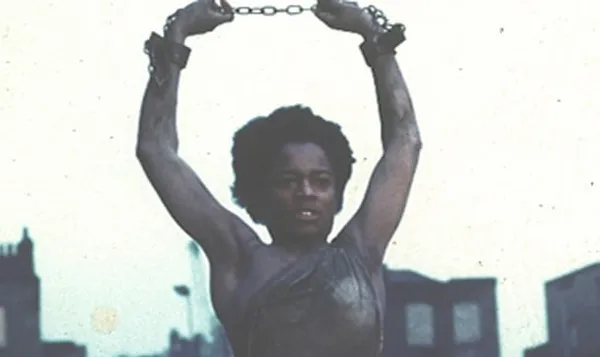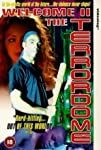Eye For Film >> Movies >> Welcome II The Terrordome (1995) Film Review
Welcome II The Terrordome
Reviewed by: Jennie Kermode

Little known though it is today, Welcome II The Terrordome holds a distinguished place in the history of cinema. It was the first film directed by a black British woman ever to be released in the UK. That was in 1995. If that doesn't make you realise that there's a problem, you're going to find the anger it depicts a real shock to the system.
This is a film set in the past and in the future, rooted in legends of resistance and belief in rebirth. It begins on a sandy beach where white people are bargaining over black people in chains. Scroll forward few centuries and we find ourselves in a ghetto which may remind you of some of today's neglected neighbourhoods, not least those where refugees are often dumped if they're lucky enough to be released from detention. The streets are crowded, the atmosphere febrile. The temperature just keeps on going up. This is the Terrordome.
There's only one white face to be seen in the streets. It belongs to Jodie (Saffron Burrows), a runaway who has left her violent white husband and is now living with Spike (Valentine Nonyela). Opinion about her is divided. Some people welcome her, either because they're committed to inclusion (a more complicated policy than it might seem when a white woman can move into a black area but a black woman would not have the same freedom to move into a white area and expect to be treated as an equal), or because they believe that the baby she's carrying can be a symbol of unity and integration. Others object to her presence, seeing Spike's choice of partner as an affront to black women, viewing her as a spy or worrying that, even with the best of intentions, she'll bring trouble in her wake.
Jodie is a catalyst for the story, but it is not her story. When her ex-husband comes visiting, looking for revenge, he doesn't care who gets caught in the crossfire. Anjela (Suzette Llewellyn) isn't responsible for any of this, but she pays a very heavy price. With no room left for any other emotion, all she can think of is that she wants to kill the man responsible and as many others like him as she can, leaving the Terrordome to wreak bloody vengeance.
We often celebrate vengeance onscreen when it's carried out by white men who have endured similar losses; and, increasingly that's extended to white women. For Anjela, the optics are different, even though her pain is compounded by the impact of centuries of abuse. Llewellyn does a superb job of expressing this in a performance full of raw emotion. As white society condemns her, the people of the Terrordome rally behind her - but is there any real hope of change?
Framed like a stage play with simple sets built on a sound stage, the film uses minimal tools to do its job. it's a pared back approach which emphasises the poverty facing black communities and the rawness of the suffering we witness. Aspects of the performances are carefully choreographed, natural movement intersecting with dance to add additional layers of meaning to the slender narrative. What comes across most clearly, though, is the anger at its core, and this is clearest of all in the final address, which brushes aside thoughts of sympathy for whites wo have tried to do the right thing on the basis that it is simply too much to ask of people who have nothing left. Though it will be familiar to many, this kind of anger is rarely seen in cinema. To lay claim to it - to the right to speak it - is an act of resistance in itself.
Reviewed on: 11 Mar 2021
















